Get Tech Tips
Subscribe to free tech tips.
This is Not a Soft Start
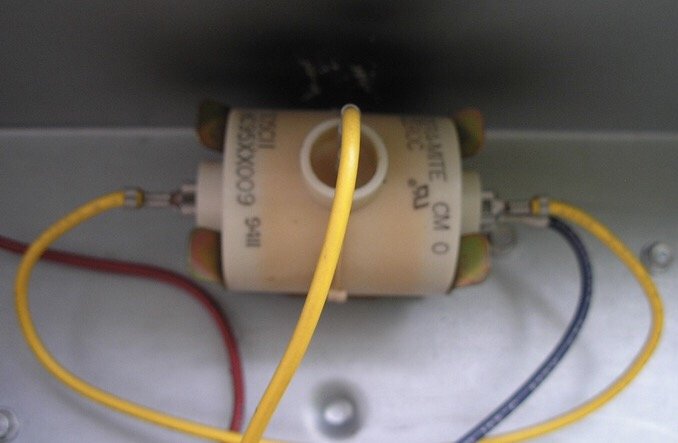
When I started in the trade, I would see these devices (above) in the field, and I would hear guys call them a PTC or a “soft start,” and I just accepted it and moved on. In fact, I've been calling PTCR (positive temperature coefficient resistors) a “soft start” for most of my career.
It turns out I was wrong.
A PTCR is just a resistor (thermistor) that increases in resistance as it heats up. It connects from run to start in parallel with the run capacitor and allows a surge of current to travel to the start winding of a motor when it starts. When the PTCR heats up, the resistance inside increases, and it essentially takes itself out of the circuit.
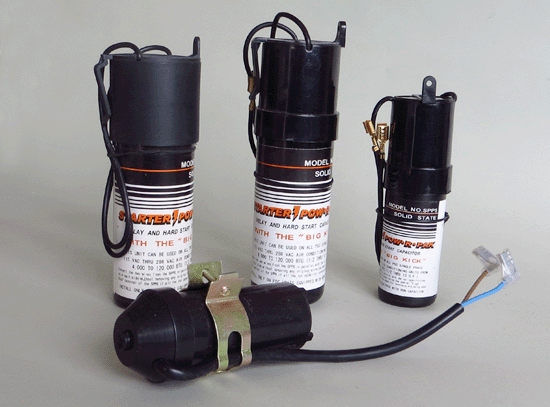
A PTCR by itself does allow a spike of current to the start winding, but it does not create a phase shift. That is why some devices add a start capacitor and just use the PTCR as the “relay” to take it out of the circuit, like the products shown above. It is a start device, but there is nothing “soft” about it.
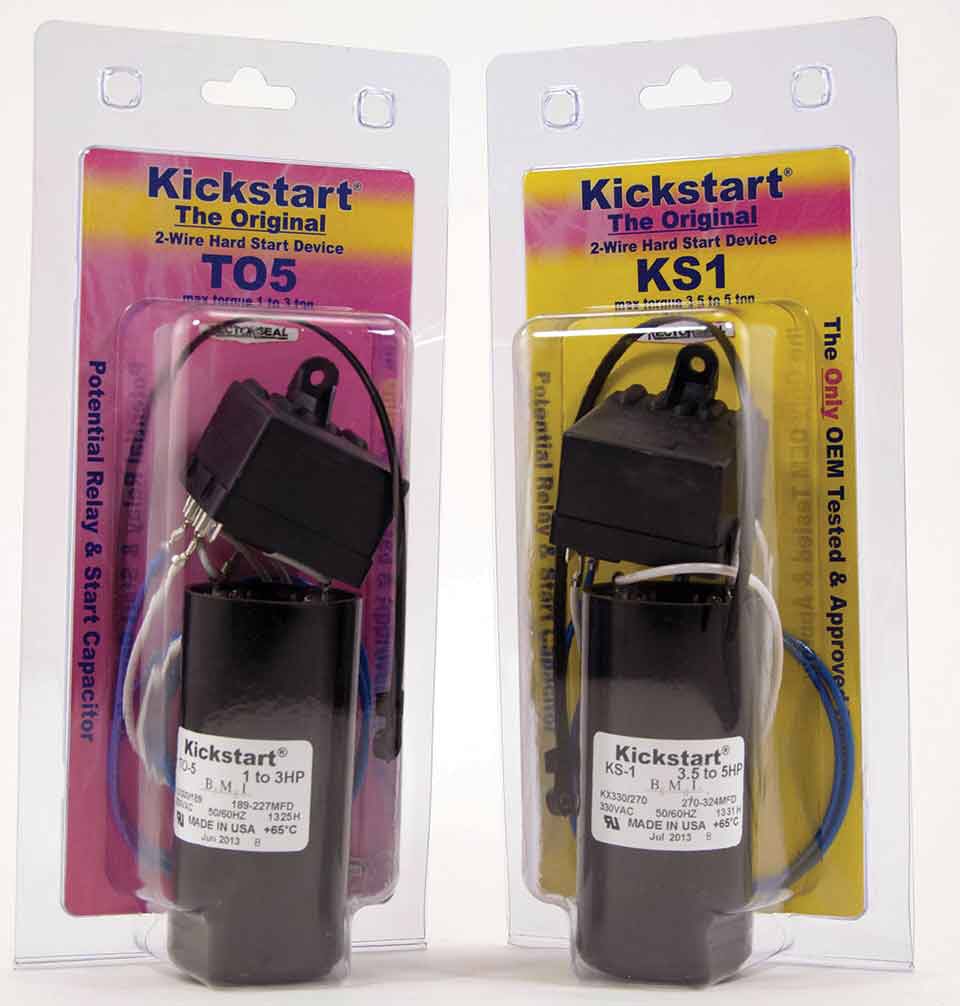
Then there are the more traditional hard start kits that use the tried and true start capacitor and potential relay instead of a PTCR. These serve the same basic purpose: increase current and phase shift to the start winding for a fraction of a second and then remove it from the circuit. It just does the “removal” part of the equation in a more precise manner.
All of these technologies serve to increase the current to the start winding quickly and then drop out.
The idea is to get the motor to 75% to 100% of running speed as QUICKLY as possible by increasing start winding current and phase shift.
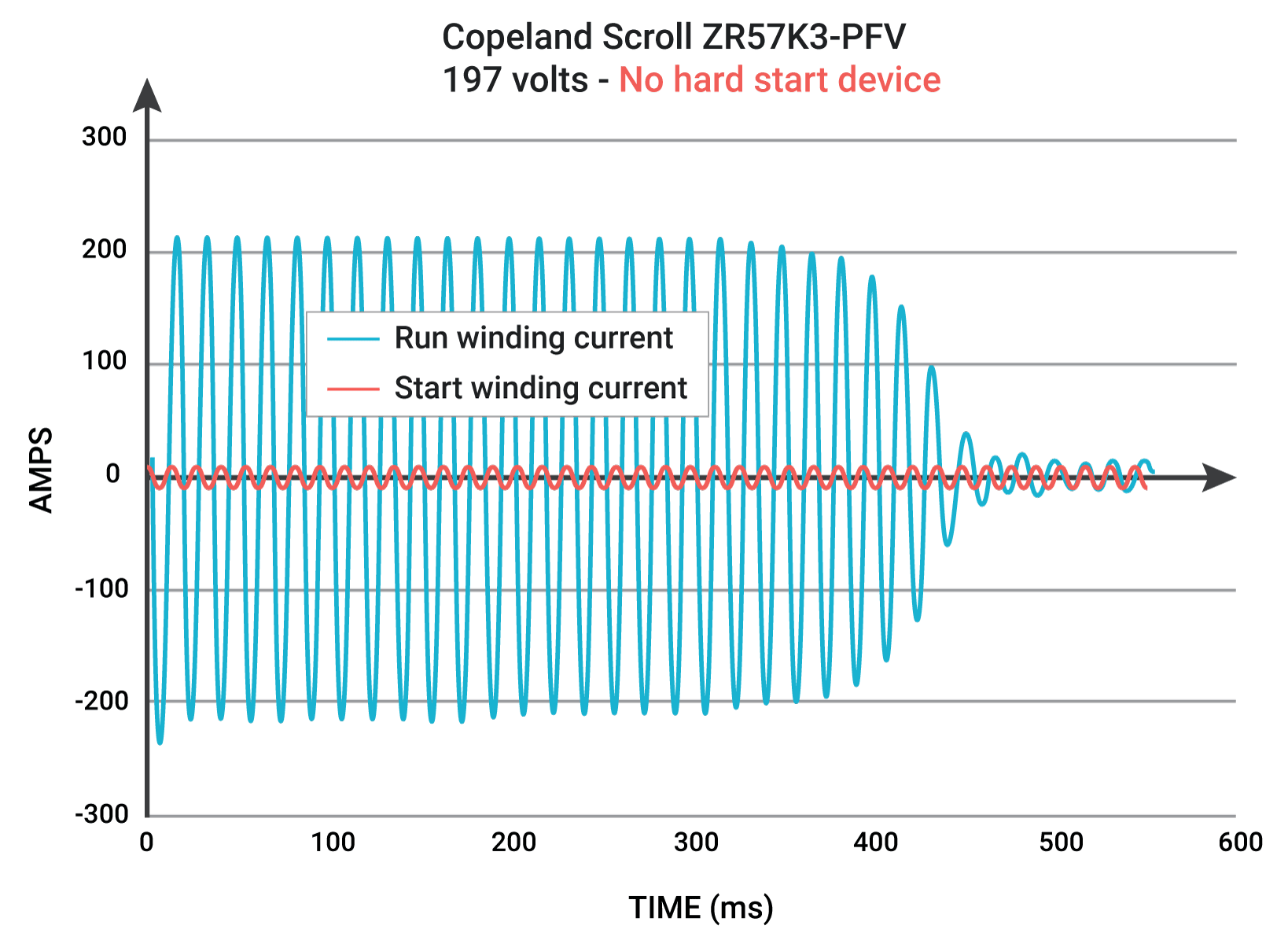
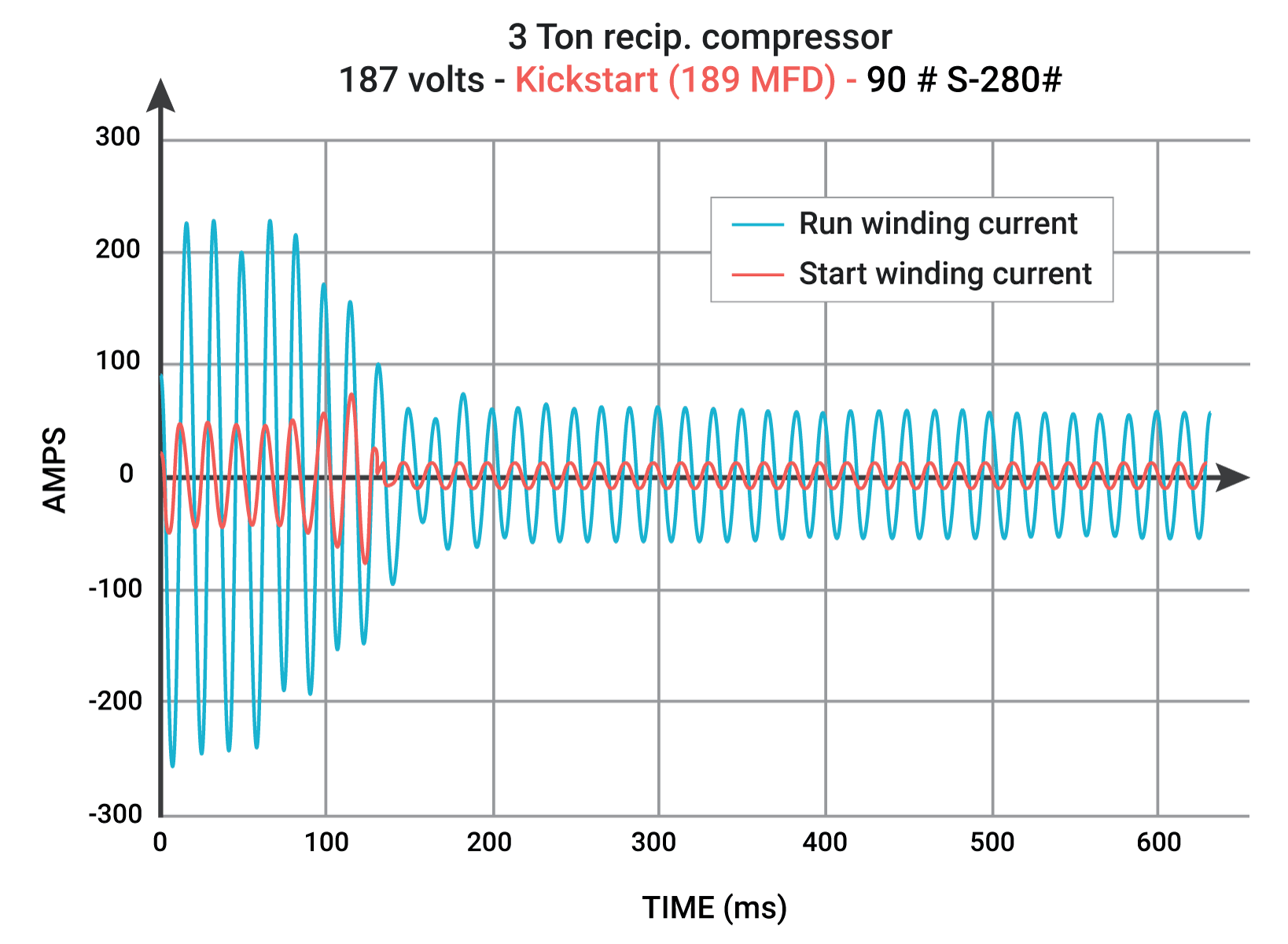
There is a good reason for this. When a motor is stationary or running at low speed, its windings act as low-resistance resistive loads—essentially, really high-amperage heaters. The longer the motor spends trying to start at full voltage, the higher the current it will draw and the hotter the windings get.
Hard start devices can do nothing to actually reduce the current the motor draws when it is at a locked rotor (stalled); the hard start device simply gets it out of that stalled/low RPM as quickly as possible. (Check out this podcast on hard start kits with James Bowman of Rectorseal.)
Many of you may note that when you measure inrush current with a hard start in a place, it will show lower than when a hard start is not in place. That is simply because a hard start shortens the time the motor remains in the locked rotor, not because it actually reduces the starting amps.
There are also some concerns about the added torque that a hard start provides over such a short time period and the side effects of that “torque shock” to the compressor's internal components and the connecting copper lines.
Soft Start
Different “soft starting” methods have been in use in large three-phase motors for a long time. The purpose is to start a motor more slowly, therefore reducing the current inrush.
The devices shown above are single-phase soft start devices. They reduce the voltage during starting to reduce the current associated with the start. These devices carefully control the voltage and, therefore, the current applied to the start and run windings to provide a lower initial current during start and slowly increase up toward full speed. These devices require advanced algorithms to do this, making them significantly more expensive than the traditional hard start technologies. They are also incapable of producing a large shifted/current boost to a start winding like a hard start.
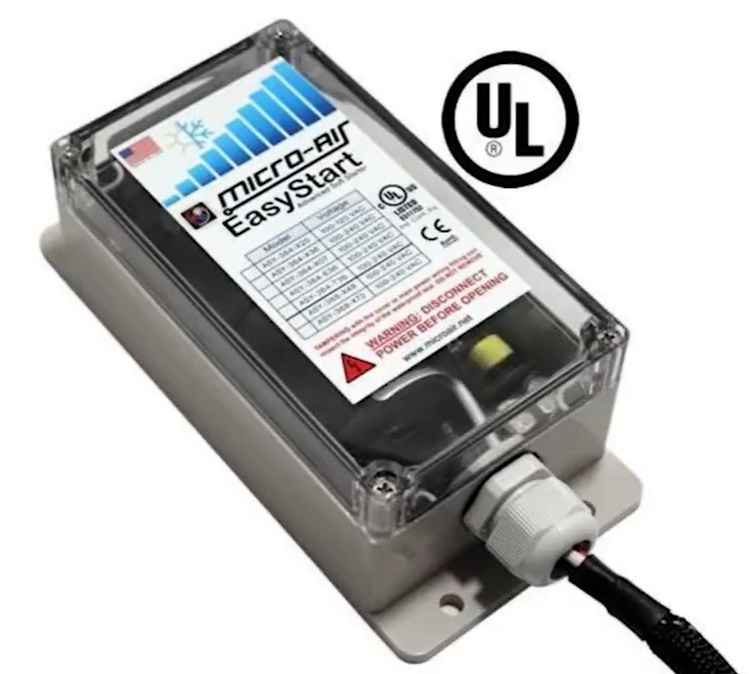
This means that while a soft start is a great device to help reduce light flicker, decrease start amps, and increase compressor life, it is unlikely to start that old, stuck compressor.
Soft starts and hard starts both serve a purpose, but what they do and how they do it couldn't be more different.
Have an old, locked compressor? A hard start is likely the best bet. If you have a complaint that the lights are dimming on compressor start? A soft start will give a better result.
—Bryan
Here is a pretty dramatic demonstration of hard start and soft start HERE. We also had a conversation with Matteo Giovanetti about EasyStart soft starts, which you can watch or listen to HERE.












Comments
Can you explain compression ratio? I know the formula but what does the answer actually mean? 1.3 actually means what?
Can you explain compression ratio? I know the formula but what does the answer actually mean? 1.3 actually means what?
?Brindiamo per ogni creatore di prosperita !
experiencia sea mГЎs sencilla y agradable.
y accesible. Explorar opciones como
La mejor forma de usar Tiradas Gratis Sin Deposito Online de manera… – http://tiradasgratissindeposito.es/
?Che la fortuna ti sorrida con che tu ottenga spettacolari premi meravigliosi !
?Brindiamo per ogni creatore di prosperita !
experiencia sea mГЎs sencilla y agradable.
y accesible. Explorar opciones como
La mejor forma de usar Tiradas Gratis Sin Deposito Online de manera… – http://tiradasgratissindeposito.es/
?Che la fortuna ti sorrida con che tu ottenga spettacolari premi meravigliosi !
?Brindiamo per ogni simbolo della fortuna !
experiencia sea mГЎs sencilla y agradable.
nuevas oportunidades sin gastar dinero propio. Muchos usuarios confГan
Opiniones honestas sobre Tiradas Gratis Sin Deposito y sus ventajas – https://tiradasgratissindeposito.es
?Che la fortuna ti sorrida con che tu ottenga straordinari premi meravigliosi !
?Brindiamo per ogni simbolo della fortuna !
experiencia sea mГЎs sencilla y agradable.
nuevas oportunidades sin gastar dinero propio. Muchos usuarios confГan
Opiniones honestas sobre Tiradas Gratis Sin Deposito y sus ventajas – https://tiradasgratissindeposito.es
?Che la fortuna ti sorrida con che tu ottenga straordinari premi meravigliosi !
?Celebremos a cada perseguidor del brillo dorado !
https://wikiluck.com.es/bonus
– http://wikiluck.com.es/bonus/#
?Que la fortuna te sonria con celebremos juntos inolvidables jackpots impresionantes !
wikiluck.com.es
?Celebremos a cada perseguidor del brillo dorado !
https://wikiluck.com.es/bonus
– http://wikiluck.com.es/bonus/#
?Que la fortuna te sonria con celebremos juntos inolvidables jackpots impresionantes !
wikiluck.com.es
?Warm greetings to all the poker masters !
Case studies of identity-minimizing gaming services examine technical and legal challenges. The objective is critical assessment rather than advocacy. betting without identificationFindings are shared to help policymakers and developers.
Policy briefs that reference anonymous gaming platforms discuss mitigation strategies. They outline steps to protect users while enabling research. Balanced policy proposals are preferred by most analysts.
ПѓП„ОїО№П‡О·ОјО±П„О№ОєОµП‚ П‡П‰ПЃО№П‚ П„О±П…П„ОїПЂОїО№О·ПѓО·: ethical and legal debates – https://bettingwithoutidentification.xyz/
?I wish you incredible victories !
ПѓП„ОїО№П‡О·ОјО± П‡П‰ПЃО№Пѓ П„О±П…П„ОїПЂОїО№О·ПѓО·
?Warm greetings to all the poker masters !
Case studies of identity-minimizing gaming services examine technical and legal challenges. The objective is critical assessment rather than advocacy. betting without identificationFindings are shared to help policymakers and developers.
Policy briefs that reference anonymous gaming platforms discuss mitigation strategies. They outline steps to protect users while enabling research. Balanced policy proposals are preferred by most analysts.
ПѓП„ОїО№П‡О·ОјО±П„О№ОєОµП‚ П‡П‰ПЃО№П‚ П„О±П…П„ОїПЂОїО№О·ПѓО·: ethical and legal debates – https://bettingwithoutidentification.xyz/
?I wish you incredible victories !
ПѓП„ОїО№П‡О·ОјО± П‡П‰ПЃО№Пѓ П„О±П…П„ОїПЂОїО№О·ПѓО·
To leave a comment, you need to log in.
Log In